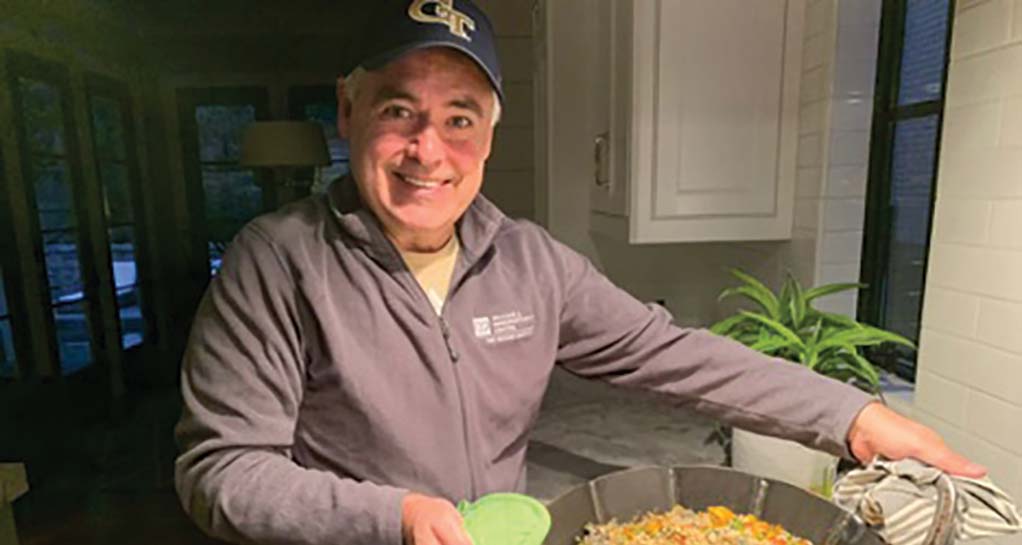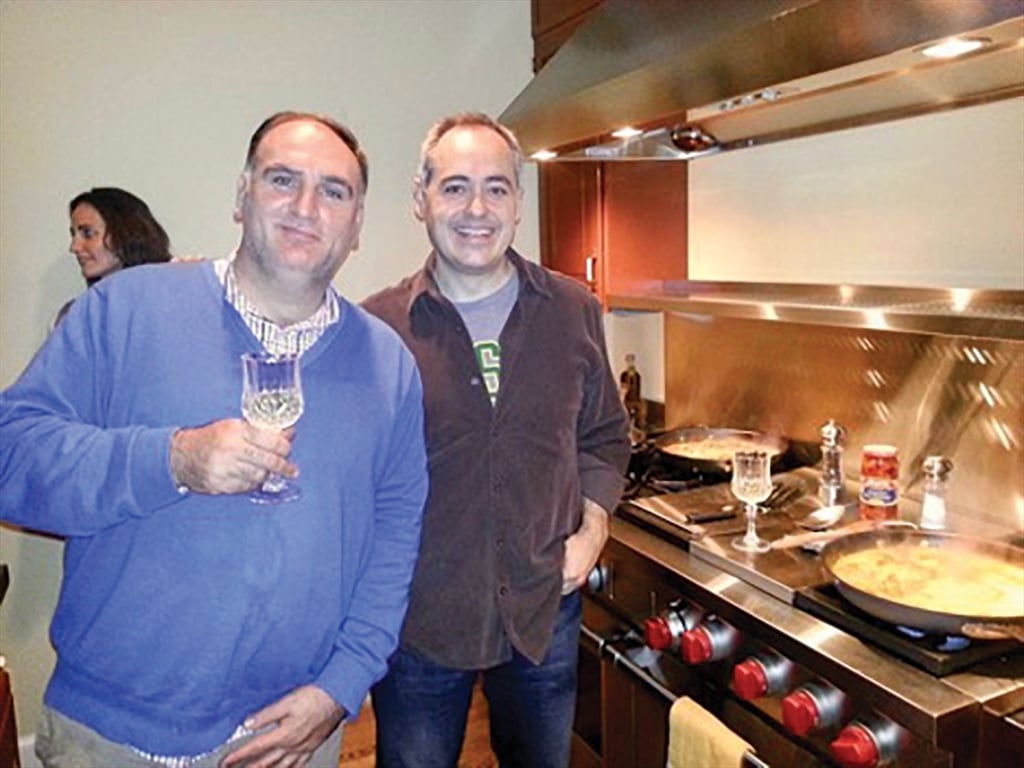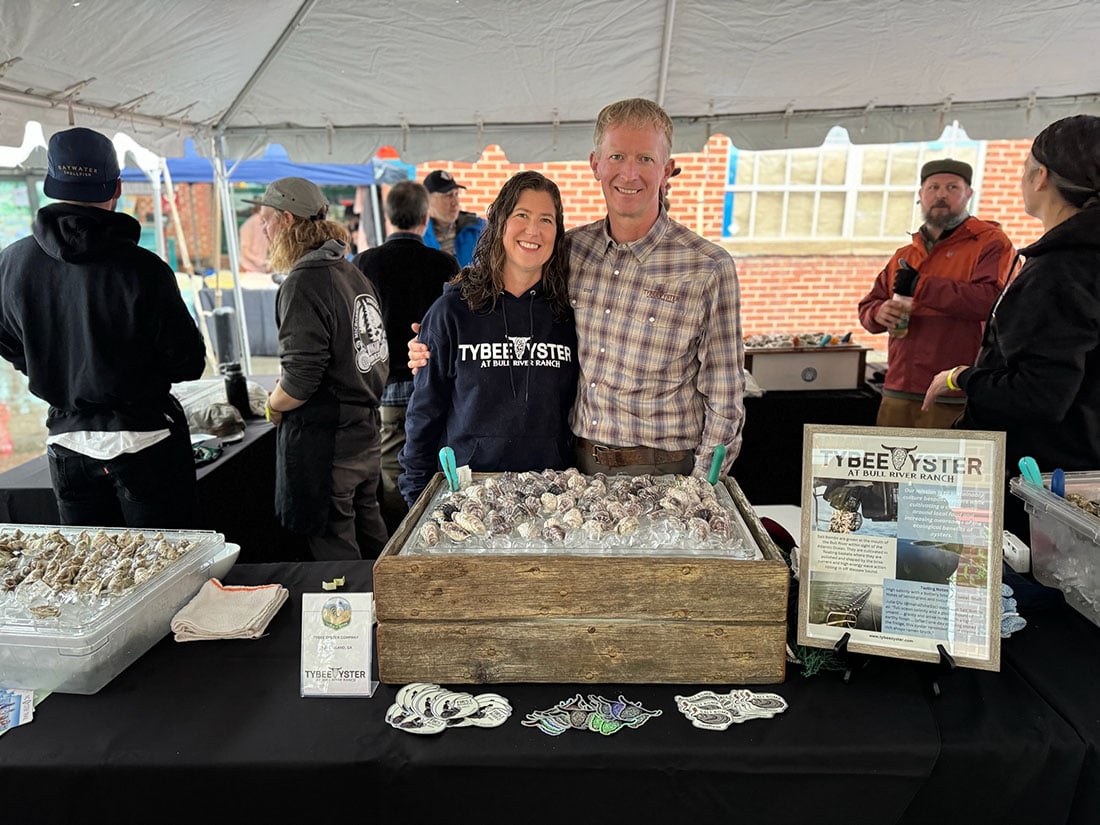Paella: A Family Tradition
By: Georgia Tech President Ángel Cabrera, MS PSY 93, PhD PSY 95 | Categories: Alumni Achievements, Alumni Celebrations

The Cabrera paella tradition began in Benicàssim, a beautiful beach town in Valencia, where Beth, the kids, and I like to spend time in the summer. Valencia happens to be the rice producing region in Spain and the place where paella originated.
Years ago, my friend Miguel invited us to a paella lunch, and I accepted under the condition that he would let me be his sous-chef. That day proved to be transformative in our family's culinary journey. I continued to build on my learnings from that day and years later, I even dared to cook paella for Spanish celebrity chef and global philanthropist José Andrés. I could have hung up my apron after peaking so spectacularly, but I kept going. The “recipe” I will share here is the result of years of practice—and, as a disclaimer, doesn't come with the blessings of either Miguel or Chef José Andrés.
My paella, like all my cooking, is more intuitive than prescriptive, and trying to codify anything I cook is nearly impossible. Because of my love for Georgia Tech, I'll give it my best here.
Paella is cooked on a special-purpose pan that is actually called “paella" in the language spoken in Valencia—thus the name of the dish. Heat your paella pan on a nice wood fire. Your grill or kitchen stove will also do—especially with modern pans that are good at distributing the heat. Pour good olive oil into the pan, being careful not to burn it. I can't tell you how much oil. You just have to feel it and let the fun begin.
Dice and sear a few chicken breasts—well fried until golden brown or, like Miguel likes to cry, "bien fritito!" Push the chicken toward the rim of the pan and throw in some diced red or yellow peppers. When they start to brown, push them also to the rim and add two or three peeled and diced tomatoes. Once fried, push them also to the rim and add other vegetables. Feel free to experiment with artichoke hearts or your favorite veggies- I've even used eggplant. You can be excommunicated if you admit in public to using onions in paella, although many do. If you do, don't tell anyone I told you. Green peas, snow peas are great. Maybe green beans if you're so inclined (no thanks). Please no brussels sprouts. Garlic, parsley, and salt are a must. And paprika, but only if you have the deliciously smoky variety produced in La Vera, Cáceres, near my mom's hometown. Otherwise, don't bother.

I know it's super expensive, but this is when I add a few strands of saffron. It makes paella taste amazing.
This would be the perfect time to add a few shrimp, but please don't behead the poor fellows. Squid would be great, too, or maybe clams and mussels, but don't
overdo it. The key to a good paella is good rice, so don't bury it in animal protein.
Finally, add the rice. This is serious. Do not attempt to cook paella with any other rice besides "arroz bomba." They sell it online. Trust me on this. How much? Forget grams or ounces or cups. Add four little mountains of rice so they barely emerge from your broth. Four rice icebergs, so to speak.
Lower the fire, spread the rice, and let it sit for 25 minutes. Do not panic thinking you have too much broth or rice. Relax with a glass of Rioja. Talk with friends. Leave the paella alone.
Remove the paella from the heat. Cover with kitchen cloths. In Valencia, they cover it with the local newspaper and even claim out-of-town newspapers don't do the trick. I'm not convinced. Clean kitchen towels do just fine.
Decorate. Bring the paella to the table to serve. Don't worry if the bottom of the rice is slightly charred. In Spain we fight for that burnt layer of rice—we even have a name for it, socarrat, from the Valencià language. Serve with fresh lemon or homemade aioli. Accompany with a fresh, simple, green salad. Open another bottle of Rioja. Take your time and enjoy!


